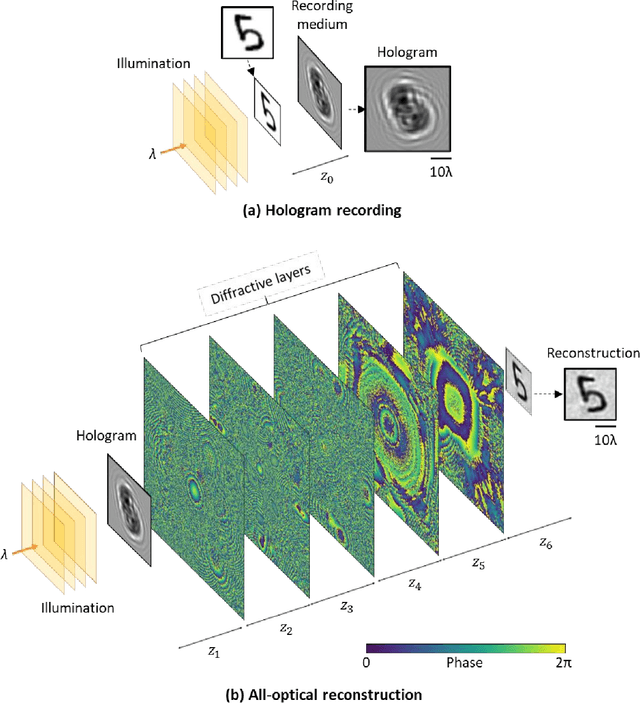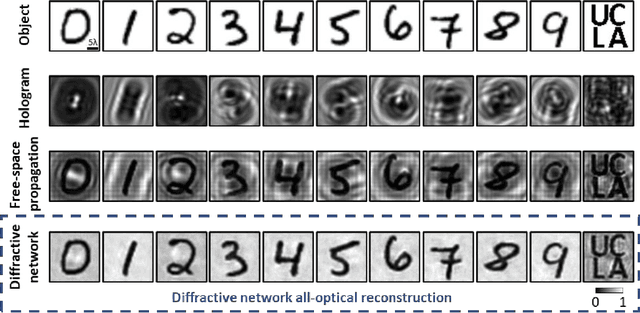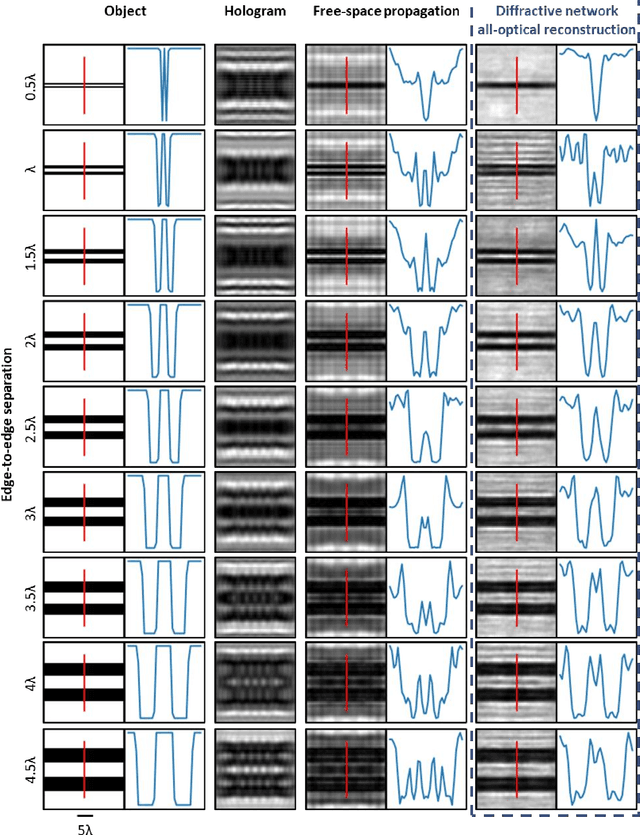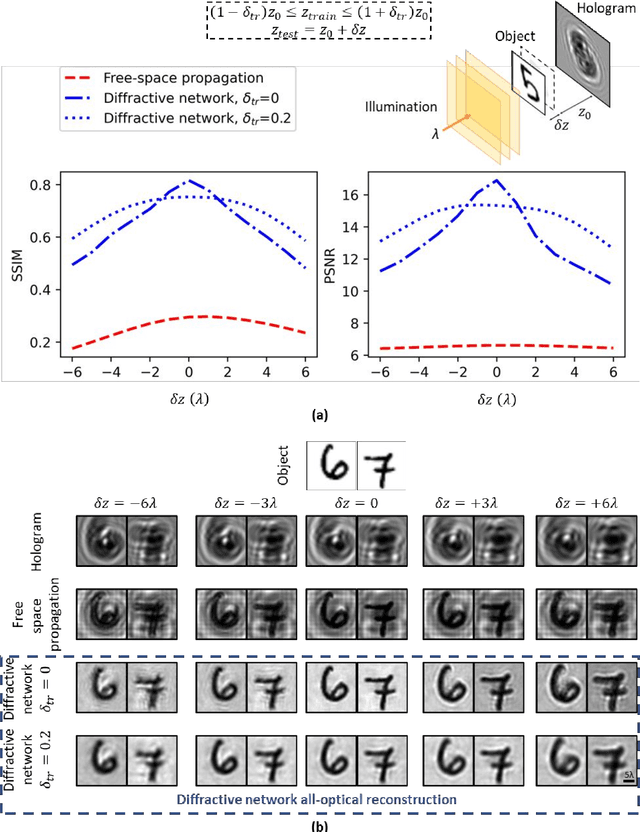Computer-free, all-optical reconstruction of holograms using diffractive networks
Paper and Code
Jul 17, 2021



Reconstruction of in-line holograms of unknown objects in general suffers from twin-image artifacts due to the appearance of an out-of-focus image overlapping with the desired image to be reconstructed. Computer-based iterative phase retrieval algorithms and learning-based methods have been used for the suppression of such image artifacts in digital holography. Here we report an all-optical hologram reconstruction method that can instantly retrieve the image of an unknown object from its in-line hologram and eliminate twin-image artifacts without using a digital processor or a computer. Multiple transmissive diffractive layers are trained using deep learning so that the diffracted light from an arbitrary input hologram is processed all-optically, through light-matter interaction, to reconstruct the image of an unknown object at the speed of light propagation and without the need for any external power. This passive all-optical processor composed of spatially-engineered transmissive layers forms a diffractive network, which successfully generalizes to reconstruct in-line holograms of unknown, new objects and exhibits improved diffraction efficiency as well as extended depth-of-field at the hologram recording distance. This all-optical hologram processor and the underlying design framework can find numerous applications in coherent imaging and holographic display-related applications owing to its major advantages in terms of image reconstruction speed and computer-free operation.
 Add to Chrome
Add to Chrome Add to Firefox
Add to Firefox Add to Edge
Add to Edge